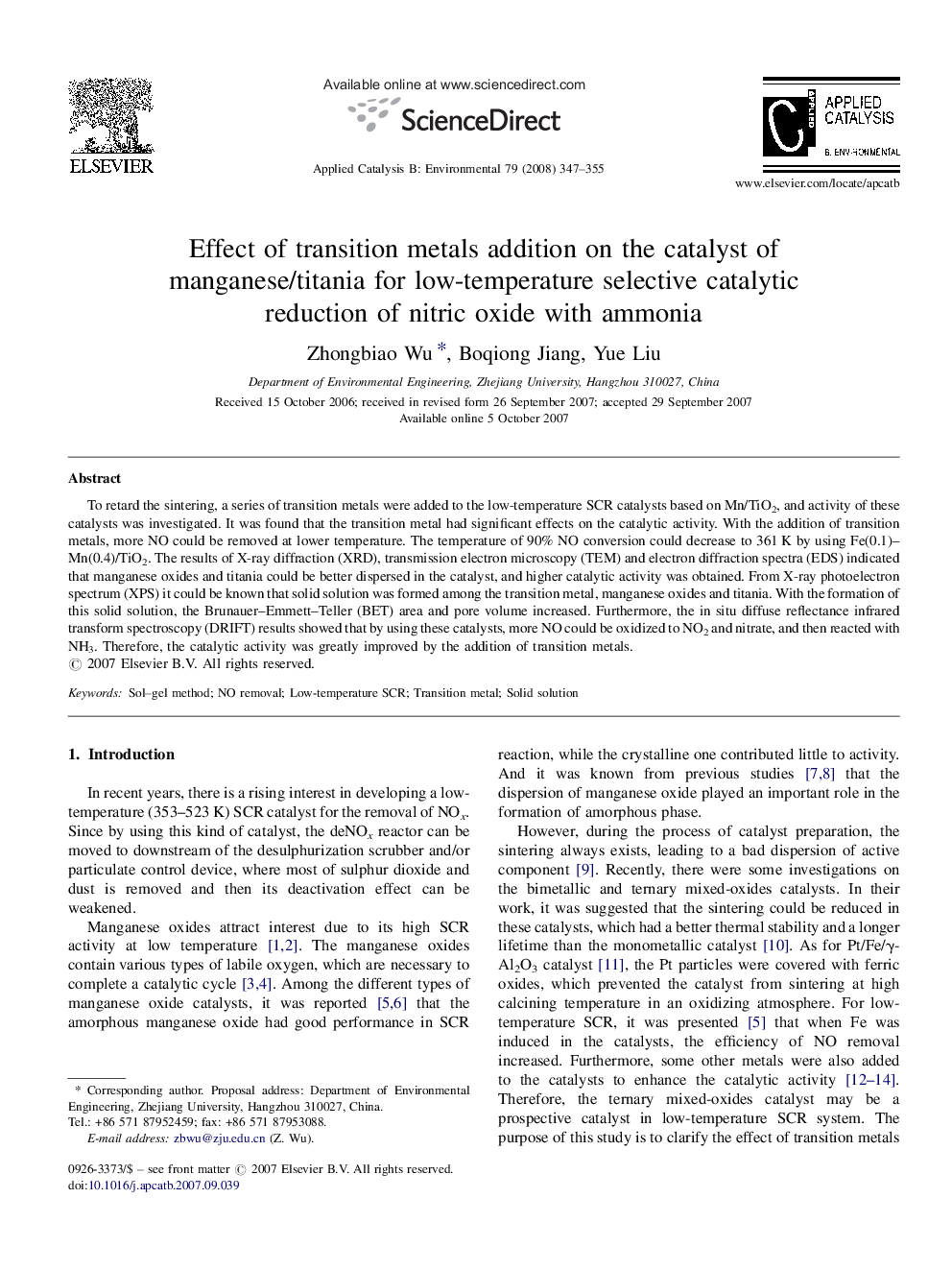| Article ID | Journal | Published Year | Pages | File Type |
|---|---|---|---|---|
| 48296 | Applied Catalysis B: Environmental | 2008 | 9 Pages |
To retard the sintering, a series of transition metals were added to the low-temperature SCR catalysts based on Mn/TiO2, and activity of these catalysts was investigated. It was found that the transition metal had significant effects on the catalytic activity. With the addition of transition metals, more NO could be removed at lower temperature. The temperature of 90% NO conversion could decrease to 361 K by using Fe(0.1)–Mn(0.4)/TiO2. The results of X-ray diffraction (XRD), transmission electron microscopy (TEM) and electron diffraction spectra (EDS) indicated that manganese oxides and titania could be better dispersed in the catalyst, and higher catalytic activity was obtained. From X-ray photoelectron spectrum (XPS) it could be known that solid solution was formed among the transition metal, manganese oxides and titania. With the formation of this solid solution, the Brunauer–Emmett–Teller (BET) area and pore volume increased. Furthermore, the in situ diffuse reflectance infrared transform spectroscopy (DRIFT) results showed that by using these catalysts, more NO could be oxidized to NO2 and nitrate, and then reacted with NH3. Therefore, the catalytic activity was greatly improved by the addition of transition metals.
